Coffee Table Finishes: Beyond Basic - Discover the Difference
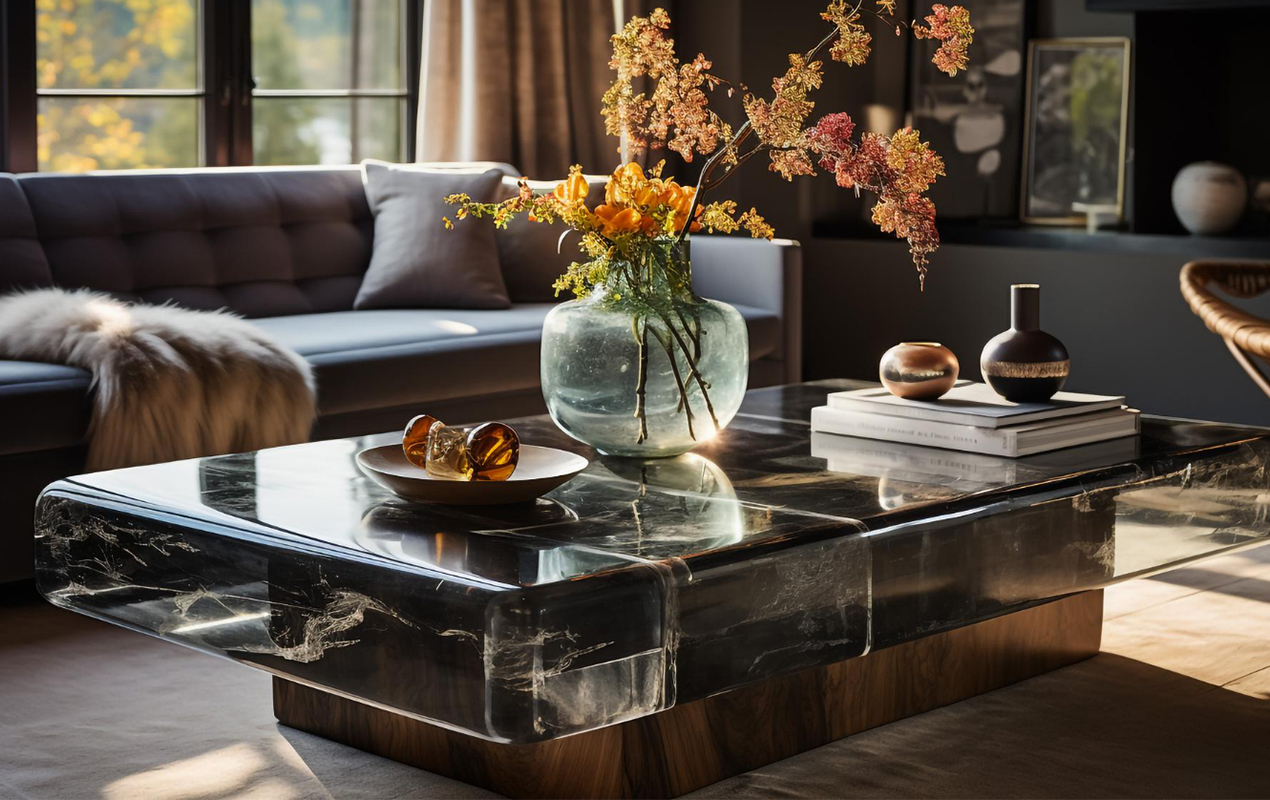
Is your coffee table fading into the background? Does its generic finish leave you feeling underwhelmed? It's time to break free from predictable stains and tired varnishes. We're ready to unlock a world of finishes that transform your coffee table from 'meh' to magnificent. Forget about covering up your table's natural aesthetic or hiding imperfections. Let's explore finishes that play up the wood's character, incorporate unexpected materials, and make your living room the talk of the town. Get ready to discover techniques that turn your table into a conversation starter and a true expression of style.
Insight – Consider Your Lifestyle: Before choosing a finish, think about how your table will be used. Are you a family with kids and pets? A busy professional who snacks on the couch? Tailoring the finish to your lifestyle ensures it lasts longer. For high-traffic tables, consider extra-durable options like resin or polyurethane.
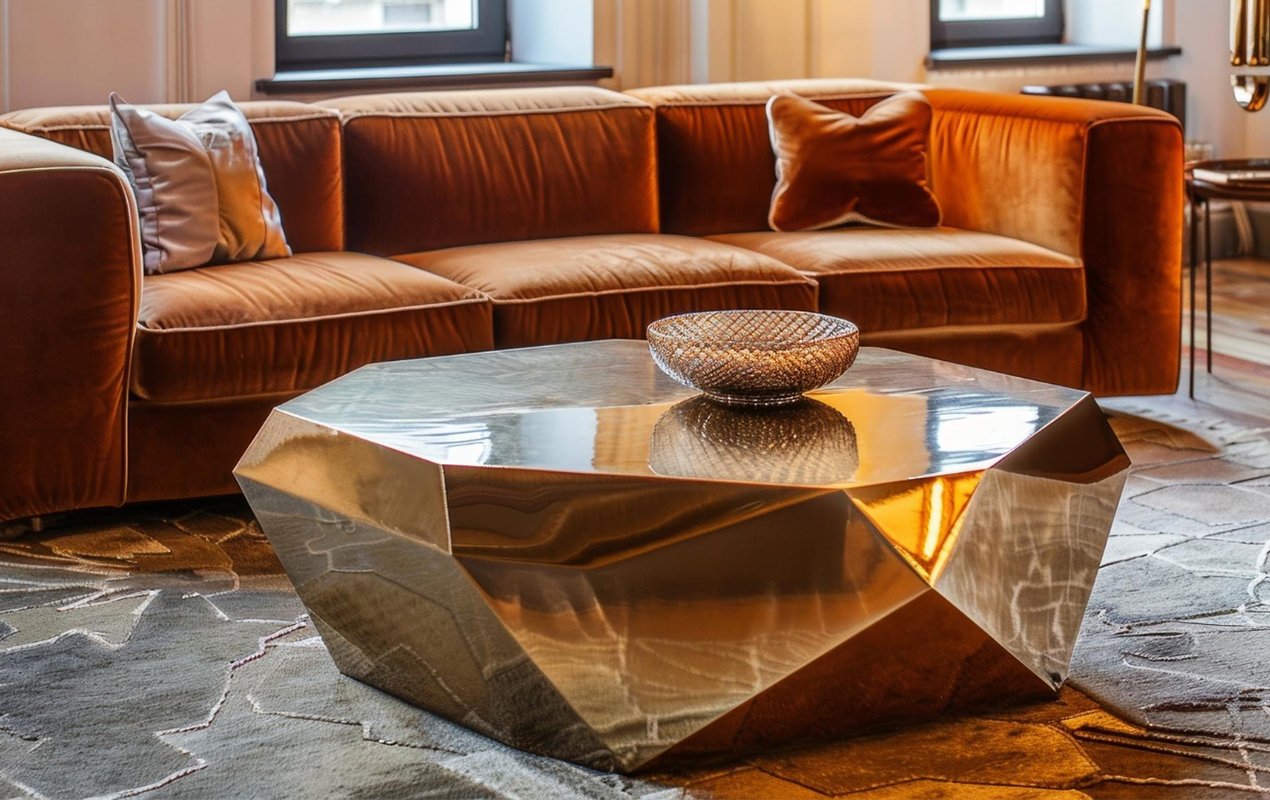
Photo by Loseyourself from Freepik
Shou Sugi Ban: The Art of Charred Beauty
Forget subtle – Shou Sugi Ban is all about bold, textured drama. This ancient Japanese technique involves carefully charring the wood's surface, turning it a rich, deep hue – ideal for a stunning black coffee table aesthetic. It might sound counterintuitive, but this charring process actually makes the wood more resistant to rot, pests, and the elements.
Imagine your table with a finish reminiscent of alligator skin or the depths of a starry night. That's Shou Sugi Ban. But this isn't just about looks — the charring leaves a unique texture that begs to be touched. It's a statement piece and a tactile experience all in one.
Is It Right For You?
- Style: If you love rustic, modern, or even a touch of industrial design, Shou Sugi Ban could be a suited fit.
- Durability: While fitting for indoor pieces, its weather-resistant properties make it an option for outdoor projects too.
- DIY factor: This can be done at home, but does require some specialized tools and safety precautions.
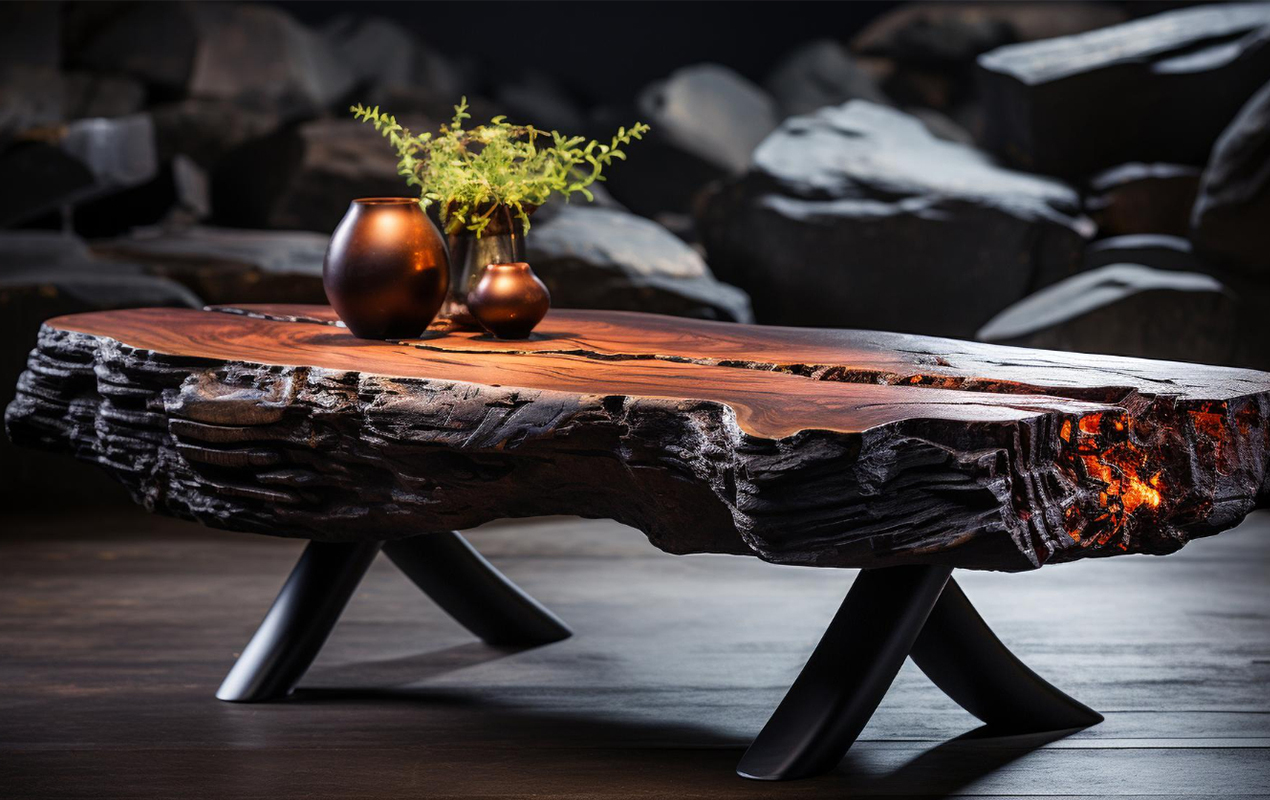
Photo by Nomannoor943 from Freepik
Insight – Match Your Hardware to Your Finish: If your coffee table has metal hardware (e.g., drawer pulls), choose a finish that complements it. Brass looks great with warm wood tones, while brushed nickel pairs well with cooler colors.
Metallic Epoxy Resin: Where Practicality Meets Art
Get ready to add serious shimmer to your living room. Metallic epoxy resin lets you individualize your coffee table into a piece both functional and intriguing. Think swirling rivers, subtle hints of pearlescent color, or bold marbled effects—the possibilities are nearly endless.
The magic comes from mixing metallic powders or pigments into clear epoxy resin. Not only can you customize colors, but you can control the pattern. Want a delicate vein of metallic color through otherwise natural wood? Or perhaps a full tabletop that resembles a shimmering ocean? Both are possible.
But epoxy isn't just about looks: it's famously durable. Once fully cured, it creates a waterproof, scratch-resistant surface perfect for a high traffic coffee table. Spills and coaster mishaps become a thing of the past.
Discover More: How to Make a Resin & Wood Coffee Table: A First-timer How-to
Let Your Imagination Shine
- DIY Potential: With careful execution, metallic epoxy projects are surprisingly approachable, even for beginners.
- Beyond Tables: Think countertops and accent walls... if you can dream it, epoxy can likely make it happen.
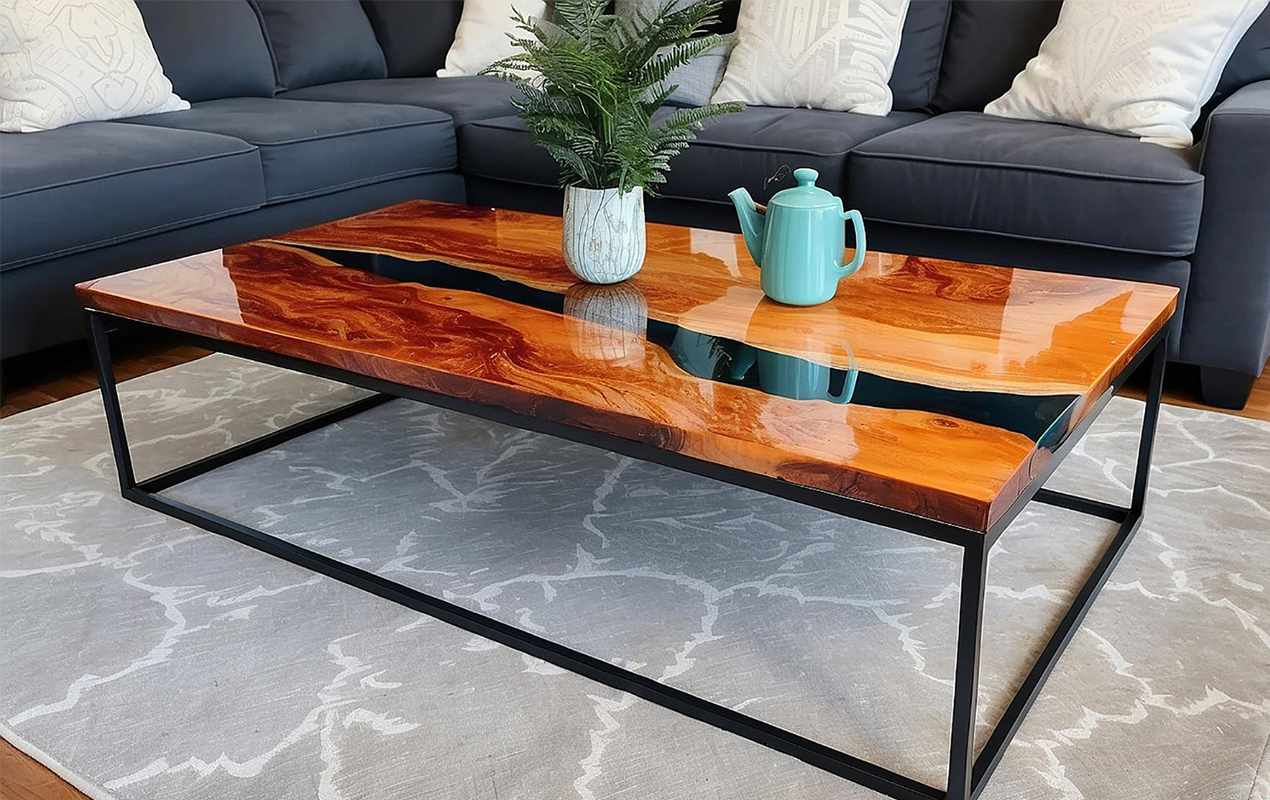
Photo by Jubayer69 from Freepik
Insight – Maintenance Matters: Even the most durable finish requires some care to stay looking its best. Research the specific maintenance needs of your chosen finish. Regularly dusting and using coasters will go a long way in preserving your coffee table's beauty and longevity.
Lacquering: A Legacy of Gloss and Protection
While varnish might be the go-to for many DIY projects, its true cousin, lacquer, takes things to a whole new level. Lacquering comes from an ancient tradition, using the resinous sap of the lacquer tree to create a finish of depth and shine. It's all about building up thin layers, slowly polished to perfection.
Lacquering does more than just coat the wood – it enriches its natural colors and grain patterns, making them seem three-dimensional. True lacquering takes patience, but the payoff is incredible, rendering the finish aesthetic, while renowned for their durability. Resistant to water, scratches, and heat, your coffee table will be protected with an elegant armor.
Things To Consider:
- Traditional vs. Modern: Real lacquer (from tree sap) is complex to work with, but modern synthetic lacquers offer a similar look with greater ease of use.
- The Art of Application: Spraying equipment gives the smoothest results, but it's also doable with careful brushwork.
- Glossy Isn't the Only Option: Lacquers come in satin and matte sheens too, for a less reflective, yet equally sophisticated, look.
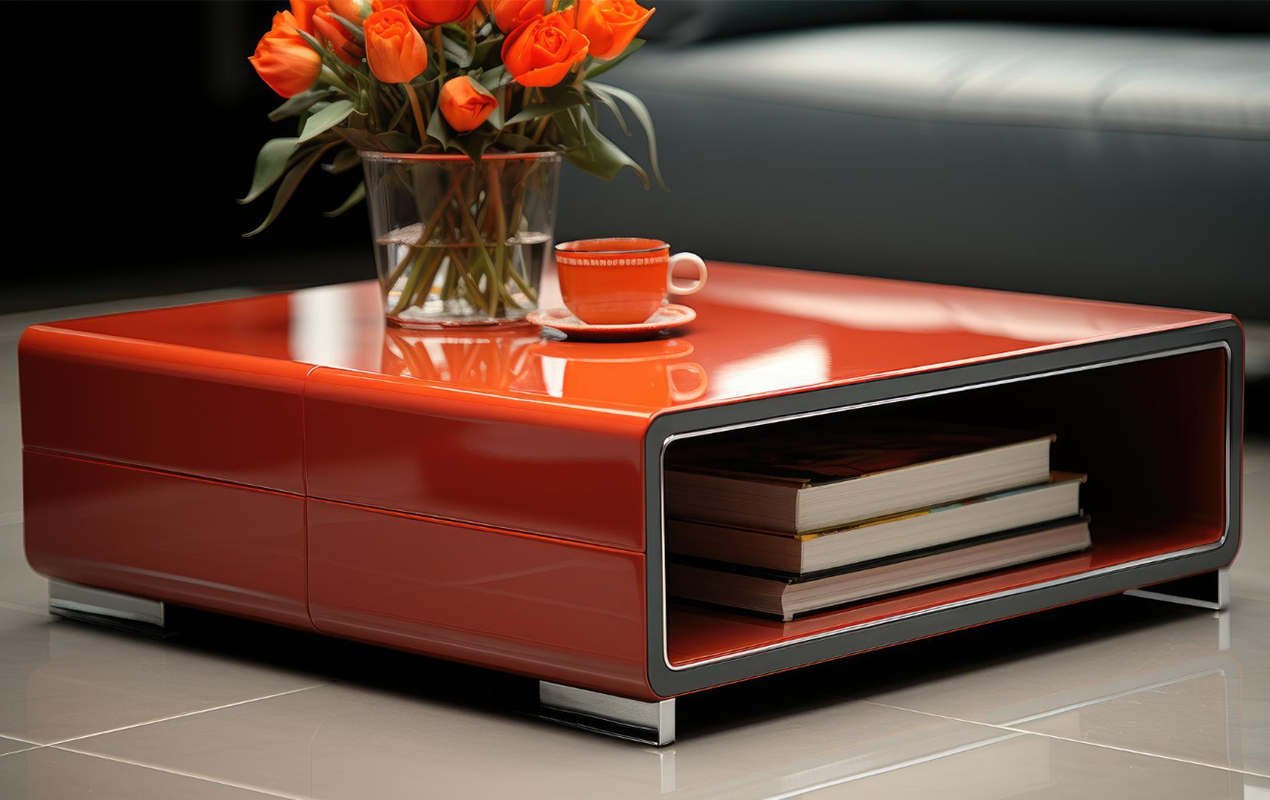
Photo by Murtaza03ai from Freepik
Insight – Combine Techniques for a Unique Look: Who says you need to stick to one finish? Experiment with combining different techniques for a truly personalized look. For instance, use Shou Sugi Ban on the table legs and a glossy epoxy inlay on the tabletop.
Milk Paint: A Touch of Farmhouse Charm
Looking for something rustic yet timeless? Milk paint might be the answer. Unlike modern paints, it's made from milk protein (casein), lime, and natural pigments. This gives it a soft, matte appearance and a surprisingly eco-friendly composition. Milk paint has been used for centuries, lending a touch of history to your table project.
The charm of milk paint often lies in its inconsistency. It can naturally chip and crackle, producing that sought-after "vintage farmhouse" feel. This means the final look can be unpredictable, adding a one-of-a-kind vibe to your piece.
Important to note: While milk paint itself is natural, it offers less protection to the wood than other finishes. Spills and wear can damage it more easily. Thorough sealing is a must, and even then, it might be best suited for accent tables or pieces that see lighter use.
Read More: Sand, Stain, Seal: A Guide On How to Refinish A Coffee Table
Milk Paint in the Modern World
- Customization: Milk paint comes in a range of colors and can be mixed for custom shades.
- Beyond Rustic: While known for vintage vibes, careful application can also form a smoother, modern look.
- It's a Bonding Agent: Milk paint can stick to almost anything without sanding, a bonus for super slick surfaces.
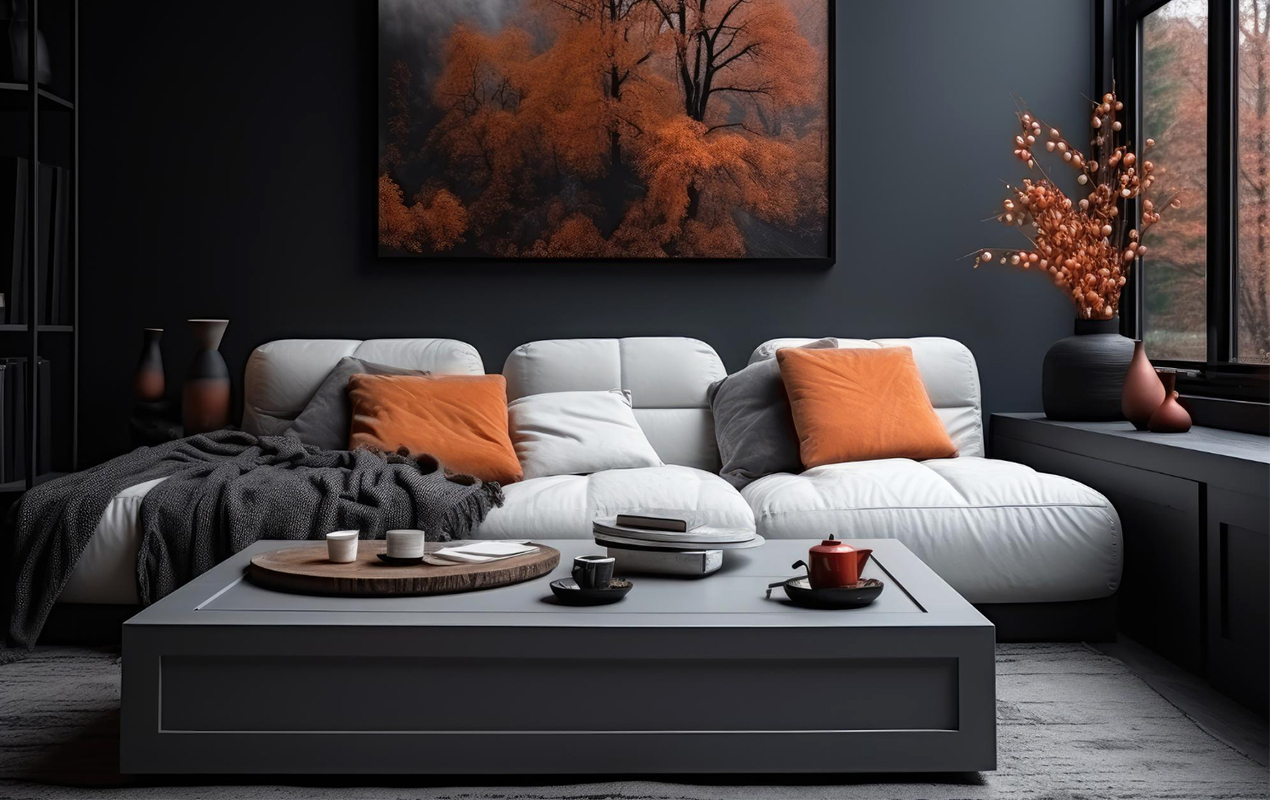
Photo by Mydecoration1 from Freepik
Insight – Don't Forget the Underside: Most guides focus on the tabletop, but finishing the underside and legs of your coffee table is equally important. It adds a polished look and protects against spills or moisture seeping up from the floor.
Final Thoughts: Your Coffee Table, Reimagined
Say goodbye to coffee tables that fade into the background. Whether you dream of sleek drama, vintage charm, or shimmering elegance, the finishes we've explored have the power to achieve your desired setup. These aren't just about protection; they turn your table into an expression of your individuality. But the fun doesn't stop here. Remember, the best discoveries come through experimentation. Before tackling your table, always test any new finish on a scrap piece of wood; you might uncover surprisingly beautiful effects.
https://www.decasacollections.com/coffee-table-finishes/
Comments
Post a Comment